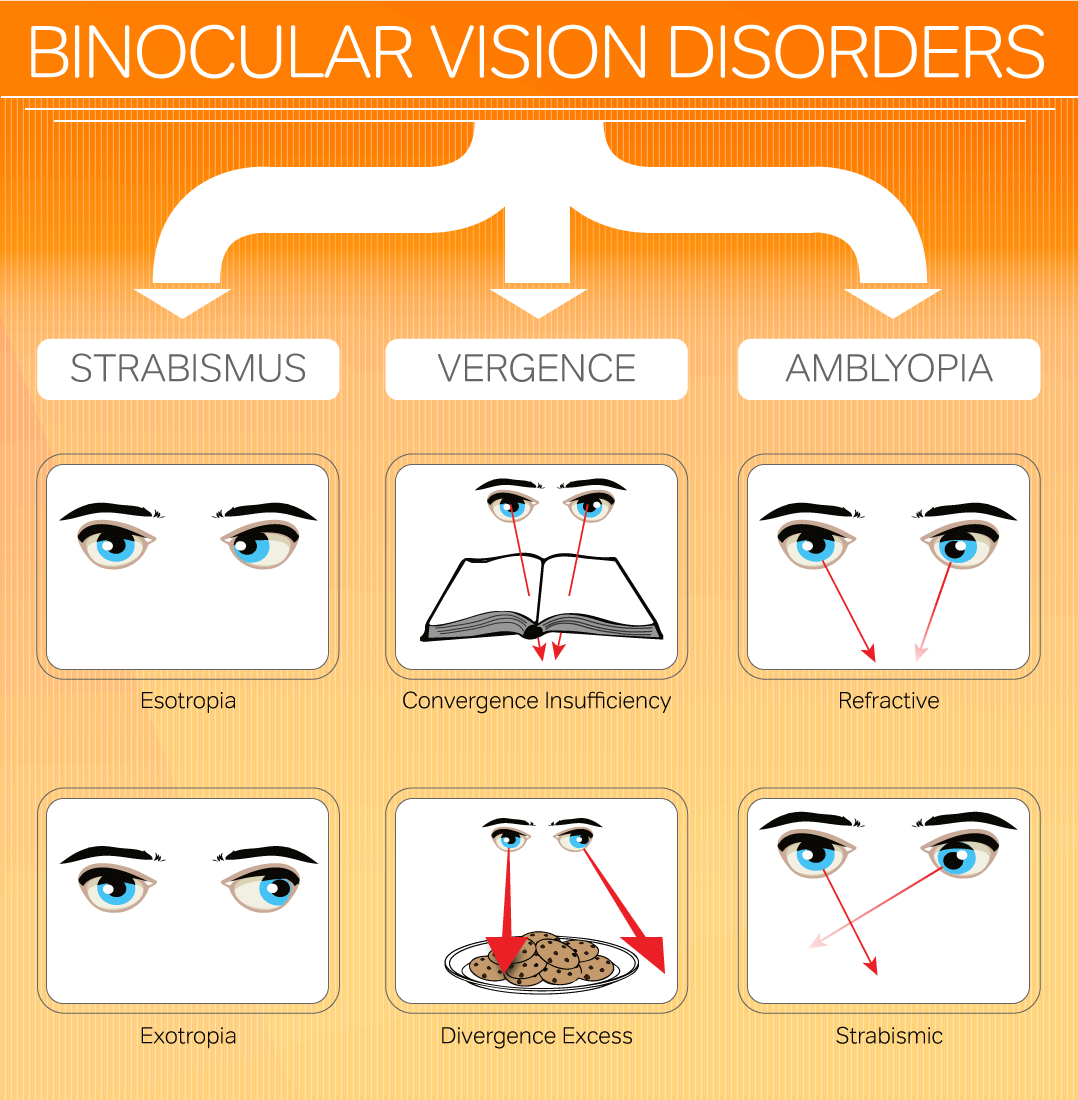Services
Binocular Vision Dysfunction (BVD) arises when both eyes fail to synchronize effectively, resulting in a lack of teamwork between them. In cases of significant misalignment, it can lead to double vision, while minor misalignment often results in maintaining a single image. Vertical heterophoria (VH) can develop as a consequence of the impaired coordination between the two eyes. Neglecting to address this condition may ultimately lead to the experience of vertical double vision.

Binocular Vision Dysfunction (BVD) occurs when the eyes are not properly aligned, which means the line of sight from one eye does not coordinate with the line of sight from the other eye. This misalignment can be very small, often going undetected in standard eye exams, but it can still cause a variety of symptoms due to the strain it places on the visual system. Common symptoms of BVD can include:
- Pain-Related Symptoms: Frequent headaches, discomfort in the sinus and eye regions.
- Postural Issues: A tendency to tilt the head, potentially leading to neck and back pain. Prolonged head tilt may result in asymmetrical facial features and a furrowed brow on one side.
- Vestibular and Balance Challenges: Experiences of dizziness, imbalance, motion sickness, impaired depth perception, coordination difficulties, and a tendency to veer to one side while walking.
- Reading Difficulties: Quick onset of fatigue during reading, challenges in maintaining attention, frequent skipping of lines, losing one’s place, and words appearing to merge.
- General Visual Discomfort: Eye strain, difficulty seeing at night, blurred vision, and challenges with tasks requiring close focus.
- Binocular Vision Strain: Symptoms like double vision, reliance on one eye for reading, and heightened sensitivity to light.
- Psychological Impact: Increased anxiety in crowded or expansive spaces, indicative of the broader effect of BVD on overall well-being.
Each of these symptoms reflects the varied impact of BVD on daily activities and underscores the importance of proper diagnosis and management.
WHAT SHOULD BE DONE NEXT?
Having 20/20 vision simply means that a person can see a specific letter on the standard eye chart from 20 feet away, the distance at which someone with normal vision is expected to see it clearly. However, this is just one aspect of healthy vision.
It’s important for children between 6 to 18 years old to undergo a comprehensive vision exam before starting school and annually thereafter. These exams assess not just clarity of vision but also external and internal eye health, color vision, optical prescription through refraction, and functional visual abilities.
If a child faces challenges in reading and learning or isn’t meeting their potential, a specialized Neuro-Developmental Vision Evaluation becomes necessary. This is also recommended for younger children (toddlers to 5 years) with conditions like Strabismus (eye turn) or Amblyopia (lazy eye). Adults who struggle with reading or have suffered a head injury should consider this evaluation as well. It’s particularly crucial for children with special needs, those on the Autism Spectrum, or with developmental delays.
Our Neuro-Developmental Vision Evaluation extends beyond the standard 20/20 vision test. It examines critical visual skills essential for reading and learning, such as:
- Eye Teaming Skills: Assessing if both eyes aim, move, and work as a coordinated team. Weak binocular vision and teaming skills can lead to issues like convergence insufficiency and impaired depth perception.
- Eye Focusing Skills: Evaluating the eyes’ ability to maintain clear vision at various distances. Proper, rapid eye focus adjustment is vital for activities like reading, writing, and sports. Inadequacies can lead to visual fatigue, decreased reading comprehension, and an aversion to close work.
- Eye Movement Skills: Checking for adequate muscle control, tracking, and fixation in eye movements. Smooth eye movements are necessary for efficient reading and shifting focus in a classroom setting, and they contribute to eye-hand coordination and visual reaction time in sports.
WHAT IS A NEURO-DEVELOPMENTAL VISION EVALUATION?
The Neuro-Developmental Vision Evaluation (NDVE) offers a more comprehensive assessment than standard eye exams, lasting about 1 to 2 hours. Conducted by our skilled vision specialist and therapist, this one-on-one evaluation aims to thoroughly understand how the visual system processes information and integrates with other sensory modalities. It also assesses whether vision is optimally supporting individual performance. During the evaluation, we kindly request parents to remain in the reception area.
Upon completion of the testing, we will analyze the results and prepare them for a subsequent consultation. This meeting, scheduled separately, involves our Behavioral and Developmental Optometrist, the patient, and/or their parents, where we will review the findings and discuss potential treatment approaches.
In some cases, the evaluation might extend beyond the usual timeframe, especially if the visual issues are particularly complex. Should this happen, our vision specialist will provide a detailed explanation and guidance at that moment.


